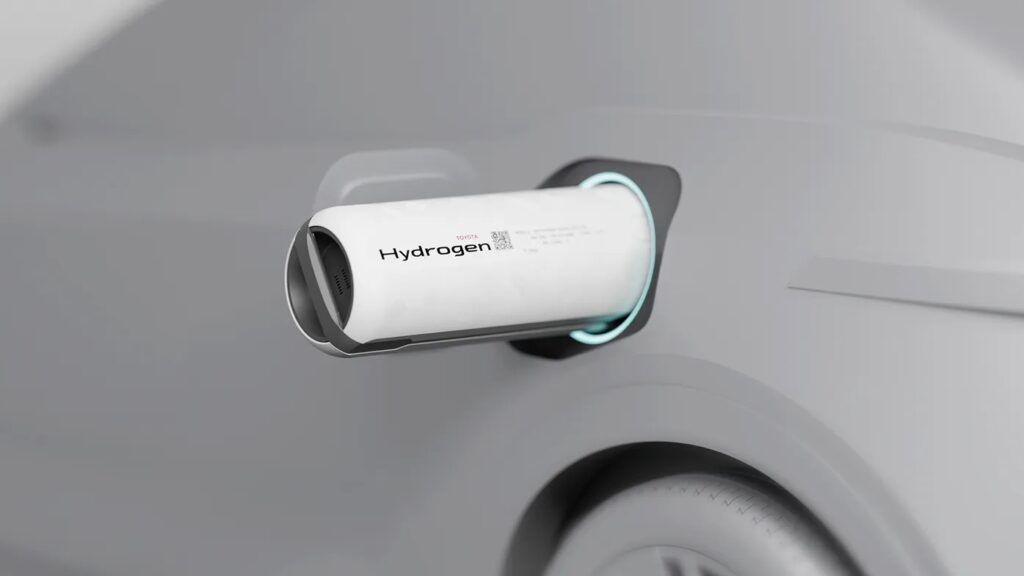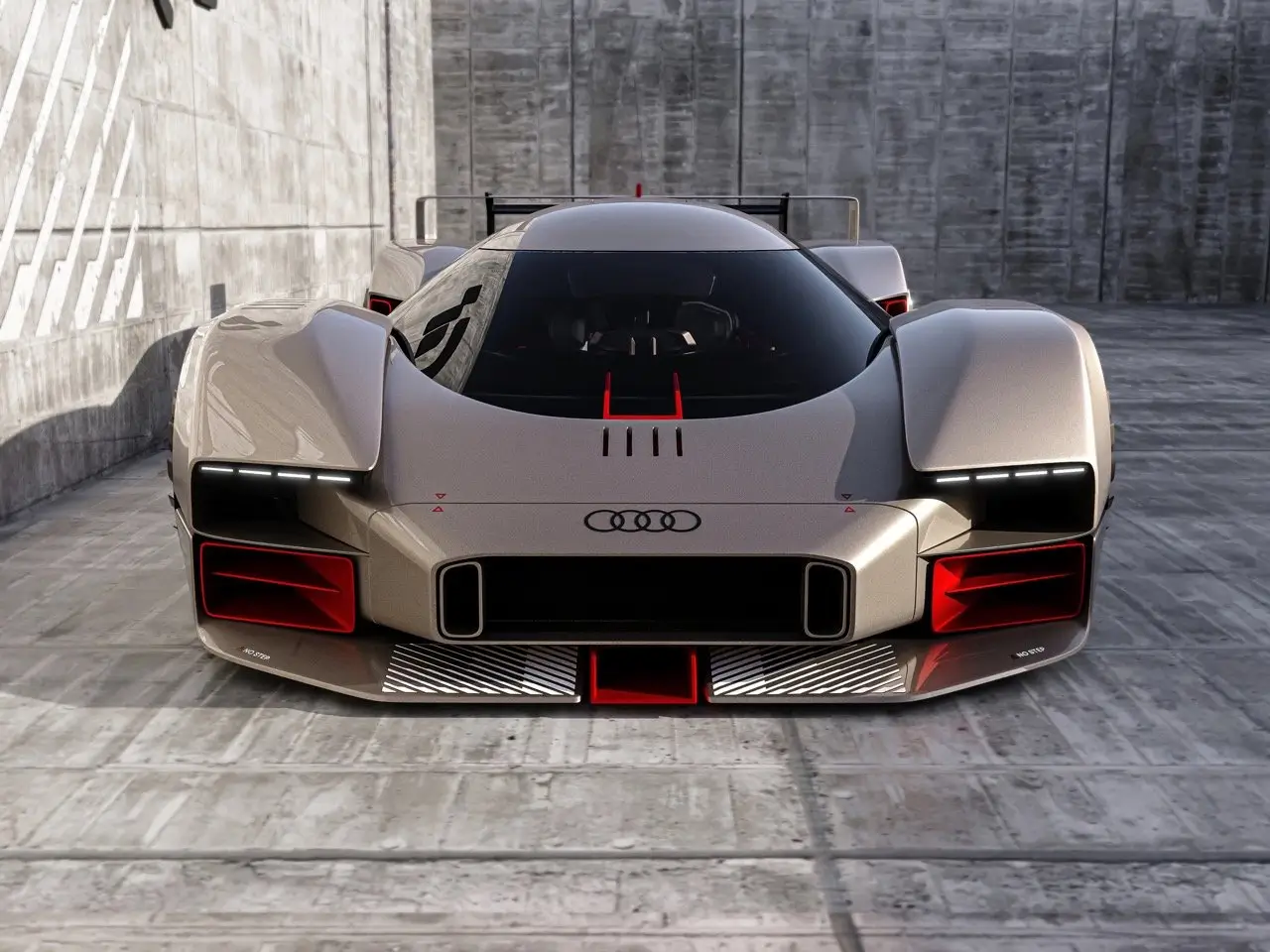Toyota, a pioneer in alternative fuel technology, has introduced a groundbreaking innovation: portable hydrogen cartridges that resemble giant AA batteries. This development could significantly reshape the future of zero-emission mobility by addressing one of the most common complaints about electric vehicles (EVs)—lengthy charging times. With hydrogen-powered technology emerging as a strong contender in the race to decarbonize transportation, these portable hydrogen cartridges have the potential to disrupt the industry by providing a cleaner, more efficient, and user-friendly alternative to traditional EV batteries.
A Game-Changing Concept
The new hydrogen cartridges are designed to be compact and easily transportable, resembling oversized AA batteries. Toyota’s approach to making hydrogen technology more accessible and versatile is unique, as these cartridges are intended to be used across a variety of applications, from powering vehicles and homes to serving as portable energy sources for outdoor activities.
Each cartridge is lightweight and portable, allowing for easy swapping and replacement. The design enables users to replace spent cartridges quickly, eliminating the need for long refueling or recharging times associated with current EV battery technology. This means that, in theory, drivers of hydrogen-powered vehicles could “refuel” their cars in a matter of minutes by simply swapping out empty cartridges for full ones—akin to replacing batteries in a flashlight.
Addressing the Challenges of EV Charging
One of the key barriers to widespread adoption of electric vehicles is the time it takes to charge conventional EV batteries. Even with the fastest superchargers, it can take anywhere from 30 minutes to several hours to fully recharge a vehicle, depending on the battery’s size and the charging infrastructure. This inconvenience, coupled with concerns about the availability of charging stations, has led many consumers to hesitate when considering an EV purchase.
Toyota’s hydrogen cartridges could provide a viable solution to these issues. Unlike batteries, which need to be plugged in and charged for a significant amount of time, hydrogen cartridges can be refueled at dedicated stations and then transported to where they are needed. This flexibility could enable a more efficient refueling system, reducing waiting times and eliminating the need for extensive charging infrastructure that is costly and time-consuming to build.
How Do the Hydrogen Cartridges Work?
The technology behind Toyota’s hydrogen cartridges is based on fuel cell principles, where hydrogen gas is stored in a safe, pressurized container and then used to generate electricity through a chemical reaction. The hydrogen combines with oxygen from the air, producing electricity, water vapor, and heat. This process is clean and efficient, emitting no harmful pollutants or carbon dioxide.
The cartridges are engineered to be both durable and user-friendly. Each cartridge is equipped with secure valves and connections to ensure safety during handling and use. Users can insert the cartridges into compatible vehicles or devices, where the hydrogen is converted into electrical energy to power motors, lights, or other equipment. Once the hydrogen is depleted, the empty cartridge can be returned to a refueling station, where it is replenished and made ready for reuse.
Versatility and Potential Applications
The portable hydrogen cartridges are not limited to automotive applications; they have the potential to transform a variety of industries and everyday activities. For instance, homeowners could use the cartridges as a backup power source during outages or to supplement renewable energy systems like solar panels. Outdoor enthusiasts could utilize the cartridges to power camping equipment or charge electronic devices in remote locations.
Toyota’s innovation could also have profound implications for the logistics and transportation sectors. Forklifts, delivery vans, and other utility vehicles that operate on hydrogen fuel cells could benefit from the ability to quickly swap cartridges, minimizing downtime and increasing productivity. The ease of use and rapid refueling process makes these cartridges a practical solution for a wide range of energy needs.
Overcoming the Challenges of Hydrogen Adoption
While hydrogen is a promising clean energy solution, its adoption has been hindered by a few key challenges, including the lack of refueling infrastructure and concerns about safety. Toyota’s portable hydrogen cartridges tackle these issues head-on by making hydrogen easier to transport and handle. The cartridges could facilitate the creation of a distributed refueling network, where hydrogen is delivered to centralized hubs and then distributed as needed.
Additionally, Toyota’s emphasis on safety is evident in the cartridge design, which prioritizes secure storage and transportation of hydrogen. The cartridges are built to withstand impact and extreme conditions, ensuring that hydrogen can be stored and moved safely. This level of safety could alleviate some of the concerns surrounding hydrogen as a fuel source and encourage broader acceptance of the technology.
Impression
The introduction of portable hydrogen cartridges could mark a pivotal moment for the automotive industry, especially as manufacturers and governments look for ways to meet stringent emissions targets. Hydrogen-powered vehicles have several advantages over battery electric vehicles (BEVs), including longer range, faster refueling, and the ability to produce only water as a byproduct. However, hydrogen vehicles have struggled to gain traction due to high costs and limited refueling infrastructure.
Toyota’s solution could accelerate the adoption of hydrogen vehicles by addressing these challenges. The portability and ease of refueling with cartridges could make hydrogen vehicles a more attractive option for consumers who value convenience and efficiency. Furthermore, the deployment of hydrogen cartridges could stimulate investment in hydrogen production and distribution, creating a virtuous cycle that drives down costs and expands the availability of hydrogen as a fuel source.
Shaping the Future of Zero-Emission Transportation
The development of portable hydrogen cartridges is part of Toyota’s broader strategy to diversify its approach to zero-emission mobility. While many automakers are focusing exclusively on battery electric vehicles, Toyota has taken a more multifaceted approach, investing in hybrid, plug-in hybrid, battery electric, and hydrogen fuel cell technologies. This strategy reflects the company’s belief that no single solution will meet the diverse needs of global consumers.
By pioneering the use of portable hydrogen cartridges, Toyota is positioning itself as a leader in the next wave of clean energy innovation. The ability to provide a flexible, efficient, and user-friendly alternative to battery charging could change the way people think about zero-emission vehicles, making hydrogen a viable option for both everyday drivers and commercial users.
While the potential of portable hydrogen cartridges is immense, there are still several hurdles to overcome before they become a mainstream solution. The establishment of a robust refueling infrastructure is crucial, as is the development of standardized cartridges that can be used across multiple platforms and devices. Furthermore, the cost of producing and distributing hydrogen must be reduced to make it a competitive alternative to electricity and fossil fuels.
Connection between governments, manufacturers, and energy providers will be essential to realize the full potential of this technology. Policies that support hydrogen production and infrastructure development, coupled with incentives for consumers to adopt hydrogen-powered vehicles, will be key to overcoming these challenges
Toyota’s portable hydrogen cartridges represent a bold step forward in the quest for sustainable, zero-emission transportation. By offering a flexible and efficient alternative to lengthy EV charging times, these cartridges could revolutionize the way people power their vehicles and devices. While there is still work to be done to bring this vision to life, the promise of portable hydrogen technology is undeniable.
If successful, Toyota’s innovation could mark the beginning of a new chapter in sustainable mobility, one where hydrogen plays a central role in reducing emissions and reshaping our energy future. As the world looks for solutions to combat climate change and transition to cleaner energy sources, Toyota’s portable hydrogen cartridges might just be the breakthrough we’ve been waiting for.
No comments yet.








